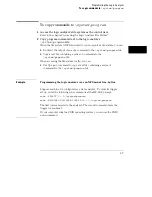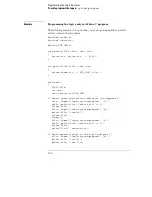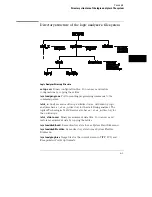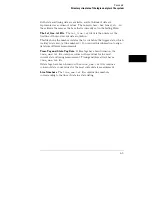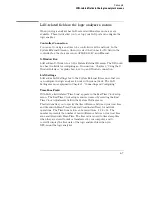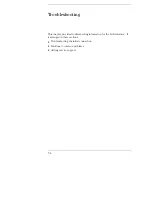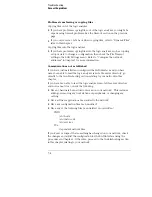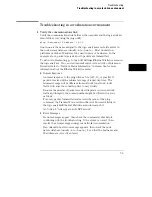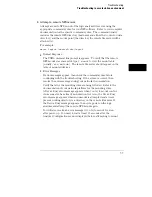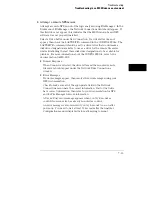
Dynamic files
The logic analyzer’s file system uses dynamic files for configuration
information and data. This means that applications such as File Manager or a
spreadsheet cannot determine the size of the files until they are retrieved.
When you view the file statistics for these files, you will see file sizes of 0
bytes or 1 byte. The 0-byte size indicates that the file is empty. The 1-byte
size indicates that there is information in the file. If you transfer the file of
interest to your PC or workstation, you will be able to see the actual file size.
Known Incompatibilities
Some operating systems and applications may exhibit unexpected behavior
when working with the dynamic files from the logic analyzer. The
"% complete" display may appear incorrect during file transfers. This does
not affect the transfer or the contents of the file. Once you have saved the
file in your local environment, the correct "% complete" will be displayed
during future retrievals.
Your applications might only retrieve one or two characters from a file that
you believe has many more characters in it. To work around this problem,
copy the file that you want to work with from the logic analyzer to your local
computer. Use the local copy as your working copy.
SUN Operating Systems
The file copy commands in the SUN workstation and Solaris operating
systems will not work with the dynamic files like those used in the logic
analyzer. You can use the
dd
command instead of using the
cp
or
cat
commands.
Concepts
Dynamic files
6-6
Summary of Contents for 1660 CS Series
Page 7: ...1 Connecting and Configuring...
Page 16: ...1 10...
Page 17: ...2 Accessing the Logic Analyzer File System...
Page 25: ...3 Using the X Window Interface...
Page 37: ...4 Retrieving and Restoring Data...
Page 50: ...4 14...
Page 51: ...5 Programming the Logic Analyzer...
Page 64: ...5 14...
Page 65: ...6 Concepts...
Page 72: ...6 8...
Page 73: ...7 Troubleshooting...
Page 104: ...Index Index 4...


